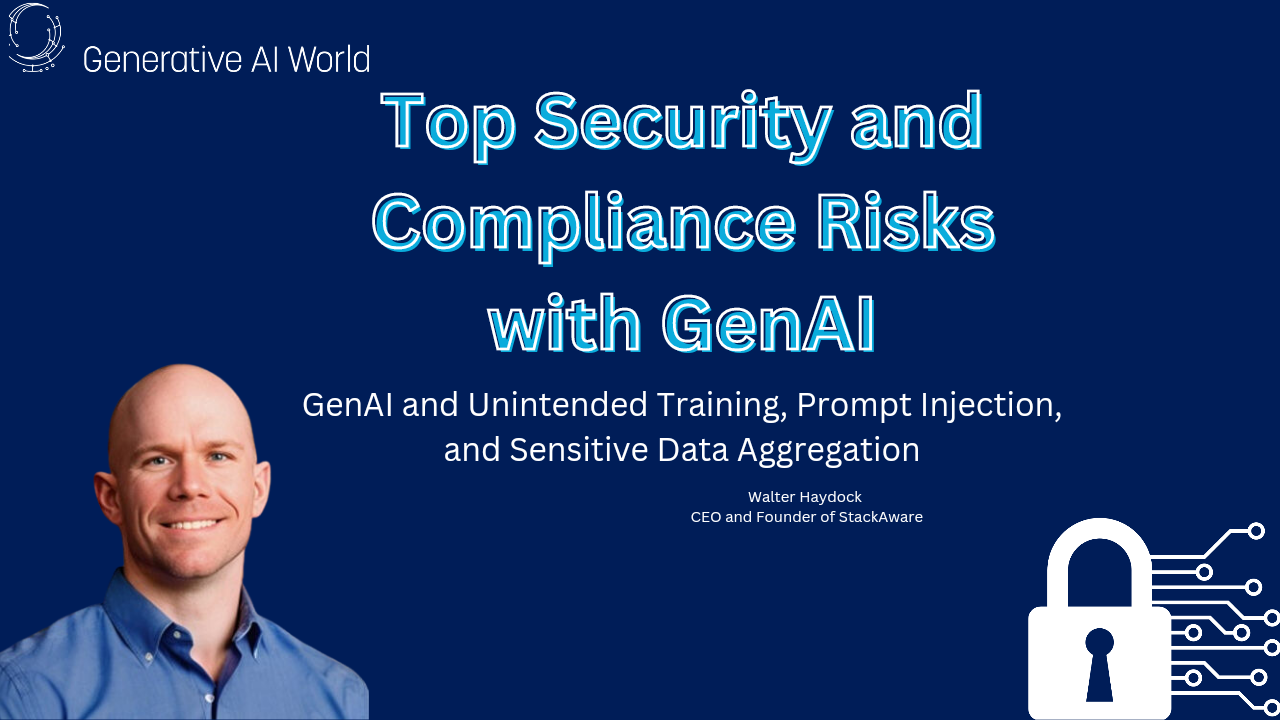Walter Haydock on Security and Compliance: Be Prepared
At the Generative AI World conference, Walter Haydock, Founder and CEO of StackAware, talked to us about security and compliance for programs. If...
 Businesses want to integrate artificial intelligence (AI) into their operations. But they may have concerns about security and privacy.
Businesses want to integrate artificial intelligence (AI) into their operations. But they may have concerns about security and privacy.
Walter Haycock of StackAware helps us to think about these concerns by providing answers to ten common security questions. These are things that executives and employees are asking during Generative AI (GenAI) trainings, or at trade shows or events. Check out some of his key points, which are crucial for any firm or company that is bent on using AI technologies and trying to find a road map for implementation when the path ahead looks dark.
Critical Questions CEOs Should Be Asking About AI Security and Privacy
Immediate Actions for Enhancing AI Security and Privacy
Create Good Policy Guidance
Policy guidance should include elements of AI governance and the use of AI tools. When you want a balanced approach, you have to look at clarity and continuity, and guidelines, and how to train people on appropriate use.
Maintaining an Inventory
It’s also important to keep a log of AI tools and how they are used. That helps you to prevent a phenomenon called shadow AI, where you have abstracted processes running in the background. A clear inventory helps with cybersecurity and more.
Communicating Clearly About AI
It’s also important that people at all levels know how you’re using AI tools. When you don’t properly explain your strategies, that can lead to certain liability situations. Clear communication is critical for good AI usage.
Is AI using my company to train GPT?
Some versions of ChatGPT may be using training data, although the consumer version has a non-data approach as a default. You can also get more control by choosing the versions of that make more sense for business.
Should we be worried about AI-powered cyberattacks?
Yes, absolutely. AI can help fraudsters to generate different kinds of spearphishing attacks or certain types of digital fraud. Because so many of these are built on false credentials and misinformation, AI ability to generate deep, fakes and other false data set is powerful to hackers.
Prompt Injection
There are also problems with people manipulating an AI model with prompts. This can leave sensitive data at risk.
Conclusion
As AI technologies continue to evolve, the complexity of securing these systems will only increase. Organizations must stay vigilant, continually updating their policies, training, and practices to manage the risks associated with AI. By addressing the critical questions and actions outlined by Walter Haycock, businesses can better navigate the challenges of AI security and privacy.

At the Generative AI World conference, Walter Haydock, Founder and CEO of StackAware, talked to us about security and compliance for programs. If...
Trusted by companies and vendors around the globe - we help you cut through the noise and stay informed so you can unlock the transformative power of GenAI .
Join us at this year's Generative AI World! Hear from enterprise AI leaders who are achieving meaningful ROI with their GenAI initiatives and connect in-person with the GAI Insights members community including C-suite executives, enterprise AI leaders, investors, and startup founders around the world